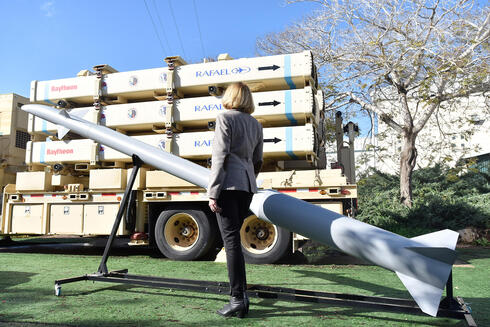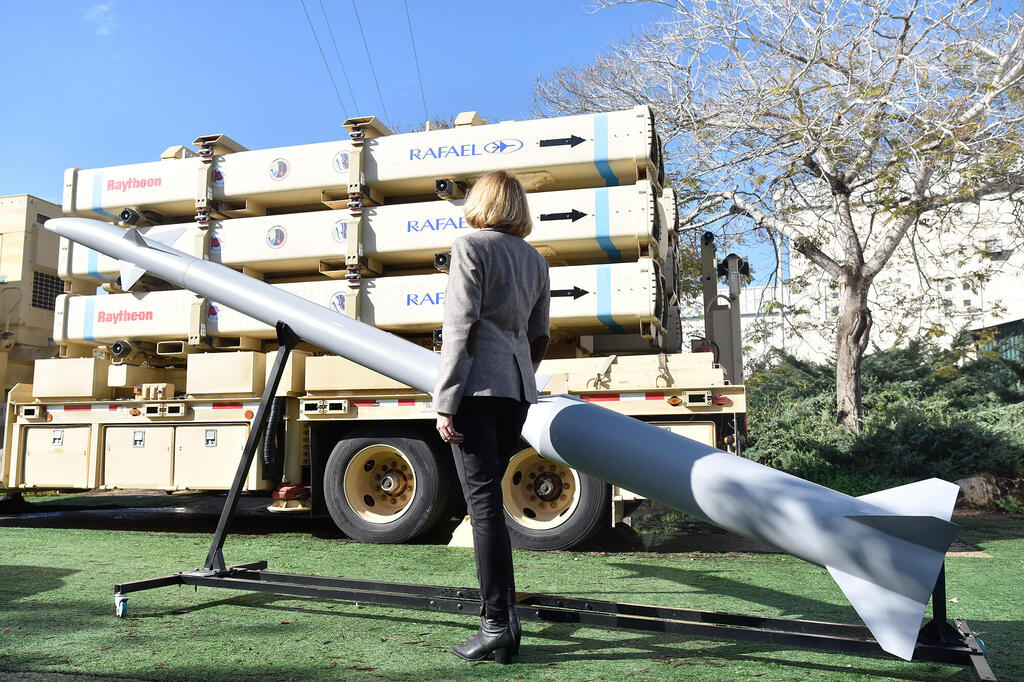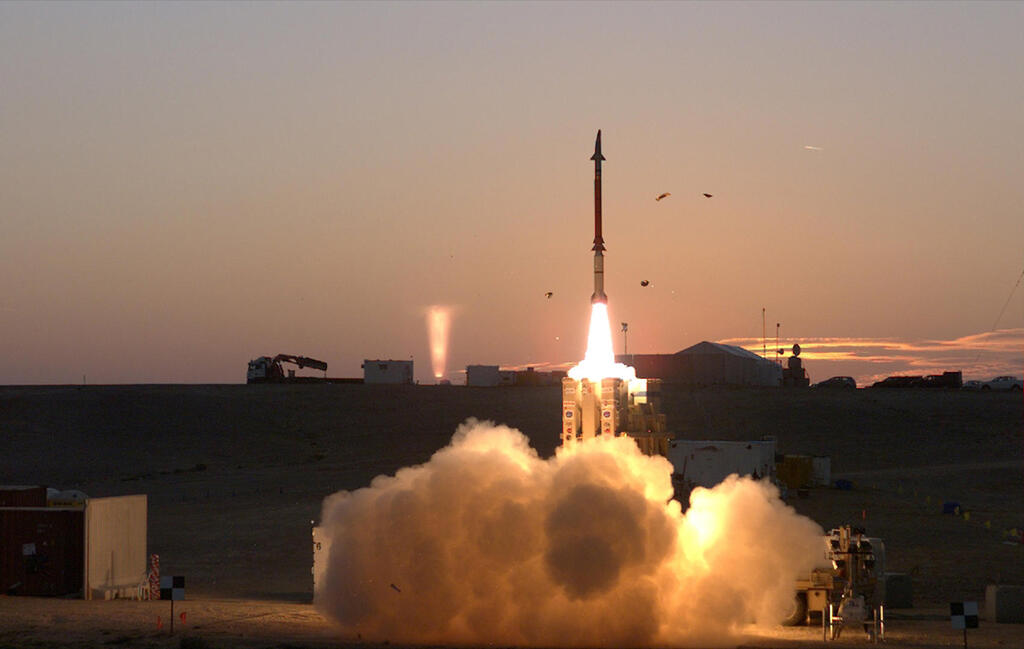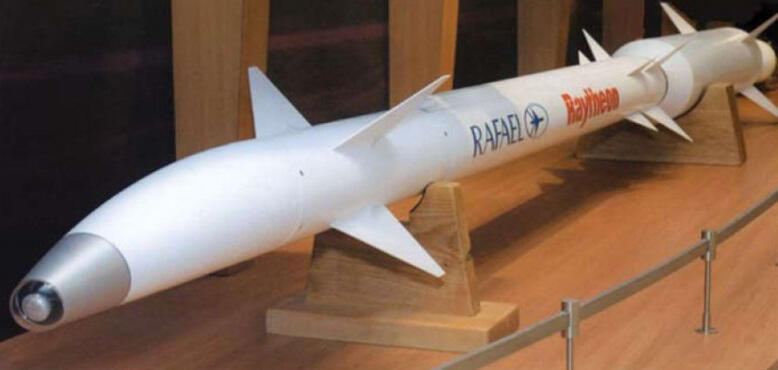
The female force rocketing Israel's David's Sling air defense system
Anat, the head of the launch and interceptor system project for the David’s Sling at Rafael, whose full name and photo cannot be revealed, discusses the new operational reality since October 7 and the new threats against which David’s Sling is being prepared
In this article we can only write that her first name is Anat. Her full name, as well as her place of residence somewhere in the north of the country and her other identifying details are prohibited from publication, due to the strict guidelines of the information security officials at defense company Rafael, where she has held a series of development positions for the past two decades. For the past three years, she has served in one of the most central and sensitive positions in the defense company, heading the launch and interceptor system project of the David’s Sling air defense system, which was developed to counter complex aerial threats directed at Israel.
The conversation with Anat takes place in one of the conference rooms of the Rafael Development Center on the 25th floor of a Tel Aviv office building, in the midst of the war in Gaza and fighting along the northern border. There are gray clouds in the sky and in the background there is a conversation taking place about a hostage deal, the possibility of the northern arena igniting into an all-out war, the pro-Iranian militias raising their heads, and about life in this crazy part of the world.
3 View gallery


Anat, project leader of the launch & interceptor system for David's Sling at Rafael
(Sharon Tzur)
Rafael, the Ministry of Defense and the IDF refrain from disclosing data regarding the role of the David’s Sling system in the current war and its number of interceptions of rockets and unmanned aerial vehicles since the black morning of October 7. However, and without providing statistics, Anat claims that she is satisfied.
"David's Sling works excellently. It fulfills its purpose and saves lives," she says. "It is a complex system that contains several subsystems: the command and control center, the radars and the weapon system itself, which includes the launchers and the interceptors that stand at the center of it. I manage its development aspects from end to end alongside a development team that works alongside me, with the task being to keep it up-to-date in the face of the constantly evolving threats."
David's Sling has been operational in the Air Force's air defense system since 2016. Can you explain its deployment and functionality?
"It has a huge growth potential, and already in its content phase it was defined as a system that will constantly develop and be perfected. That is why we always have our finger on the pulse, so that it can respond to all the new threats that our neighbors develop against us. We do not sit on our hands even when the system is operational and deployed in the field , we continue to develop it and adapt it to current and future needs. It is a learning system, and we are also constantly learning where we can and should tighten the protection it provides. David’s Sling has not yet said its last word."
How challenging are the threats posed by neighboring countries?
"Our enemies are constantly developing new threats. They want to surprise our systems in all kinds of ways, and in this race we fight and deal with them. One of our strengths is that we have excellent professional teams. The team that works with me is very strong, they are all goal-oriented and leading professionals. We all see eye to eye on the task, to protect our home, and that is where we all direct the skills, knowledge, experience and abilities we have gained."
Could you elaborate on the day-to-day demands of your work?
"In a time like this, of war, this is a job that requires availability 24 hours a day, seven days a week. There is a lot of vigilance. My team and I work shoulder to shoulder with the Ministry of Defense and the Air Force. Every incident in which David’s Sling is involved is investigated in detail in order to learn from it."
"Learning from successes and failures"
Anat lives in a small town in the north of the country with her spouse, whom she met during her work at Rafael, and her three children, ages 9, 16 and 19. Her eldest daughter is an infantry fighter in the Caracal Battalion of the IDF: "She is currently in a commanders course following a few months of service along the southern border. There is great pride in her service, but also considerable concern," Anat says. Anat herself immigrated to Israel from Moscow when she was 11-years-old, with her parents and her five-year-old sister. Her mother is a doctor, her late father was an electrical engineer. She grew up in Kiryat Motzkin until she was recruited into the Mamram technological unit of the IDF.
She later studied computer science and was accepted by Rafael. Her service with David’s Sling started off on the wrong foot. In the summer of 2018, two expensive David’s Sling interceptors were launched at two surface-to-surface missiles fired as part of the Syrian civil war, after the system mistakenly estimated that they would land in Israeli territory. The Syrian missiles finally fell within Syrian territory. The interceptors of the new Israeli defense system were already in the air, one of them exploded in flight and the other fell in Syrian territory.
"We are learning all the time," she says. "We learn a lot from successes, so shouldn’t we learn from failures? This is a very advanced system, parts of which are based on artificial intelligence, and they allow it to improve performance by relying on previous launch data. But artificial intelligence does not replace the engineering teams. Everything that can be investigated in it is investigated, so that we can generate insights and draw conclusions. This is the basis. This is a multidisciplinary system, and therefore every engineer and every team leader involved in it needs to know and understand what worked and in what way and where and what needs to be improved. All the insights we generate in the investigations fit within the entirety of the system, and it is a complete ensemble that works together."
"There was no chaos on October 7"
In the violent reality of the Middle East, it did not take long for David's Sling to have an opportunity for a corrective experience. In the midst of Operation Shield & Arrow, against the Islamic Jihad infrastructure in the Gaza Strip in May of last year, a David’s Sling missile successfully intercepted a long-range rocket launched into the central area of Israel. "This was the first operational interception of the system, and it caught us after a very intensive sequence of operations related to the development and updating of its capabilities and performance," she says.
Five months later, the war broke out in Gaza. The flood of rockets aimed at Israeli cities, mainly from Gaza but also from Lebanon, gave the David’s Sling plenty of opportunities to demonstrate its capabilities and performance, and it became an integral part of Israel's answer to the multitude of rockets being fired at it. In the midst of the fighting, Rafael and the Ministry of Defense signed a historic deal worth approximately NIS 1.3 billion in which a David’s Sling will be exported for the first time to Finland, which is upgrading its defense system against missiles against the background of the war between Russia and Ukraine. According to her, "It is a very significant event that such a system is sold to a country that is a member of the NATO alliance. It’s a big deal."
What do the Finns gain from the deal?
"They gain the best air defense system in the world, which is operationally proven and these days functions very well and with excellent interception rates. They get a system with experience in combat missions."
While Anat's team is constantly working on the investigation and analysis of the interceptions of the David’s Sling, the functioning of its control system, and a host of other data, other teams at Rafael are working on other developments that look to the future and are supposed to answer threats that other countries are already working on, and will emerge on the scene in the coming years.
Rafael is investing one of its main efforts in completing the development of the Iron Beam system, which is based on a powerful laser beam that is supposed to neutralize rockets and aircraft at the speed of light and at zero cost compared to the cost of intercepting with an Iron Dome rocket. Another system under development is the SkySonic, designed to protect against the future threat of hypersonic missiles that fly at more than five times the speed of sound.
Could it be that the ability to intercept almost any aerial threat put Israel in a state of false security, while the enemy improved its capabilities at the borders?
"Attack and defense are two efforts that must exist and progress simultaneously. On the one hand, the Israeli population must not be held hostage to missile attacks and all kinds of flying objects developed by our enemies, and on the other hand, the state must continue to invest, as it also invests, in the development of offensive systems. Rafael is also a very significant partner in this effort and expands the supply of precise measures such as smart bombs."
Speaking of defense and attack, do you have any insights from the Hamas attack?
"I don't want to imagine what our reality would look like on October 7, and the days that followed, without air defense systems. The fact that in the first two days of the war rockets were fired at Israel at an equal amount to the number fired throughout the entire Second Lebanon War shows that it is good that we have a strong and tight air defense.”
I suppose that any experience you had at Rafael previously pales in comparison to the intensity of the events on October 7th.
"Indeed, and there have been quite a few foundational events over the past few years. There is no doubt that the morning of October 7th is stronger than any other event I have experienced."
How did you conduct yourself in an atmosphere of complete chaos in the country, uncertainty, and a lot of stress and anxiety.
"I did not feel the chaos you are talking about. Of course, I reacted to the events immediately, as soon as you realize that there is an event of such magnitude, you jump in your car and race to work and realize that we are in a new operational reality. Despite the panic, the processes were organized and orderly. My team was totally commited. There were quite a few people who were called up to the IDF reserves and there were many more who previously worked in the David’s Sling program who called us, offered help in everything they could, offered to come and assist even in the production processes of the missiles."
How are tasks prioritized in an emergency situation, when everything is urgent and there are decisions that need to be made right now?
"In the right order. Everything is urgent and necessary, and we do it in a calm and methodical way. This means managing the event with the air defense system of the Air Force, with the Ministry of Defense (which is in charge of the multi-level defense system) while improving coordination with them on the fly. It wasn't chaotic, but it was very intense."
As someone who has a technological role, how do you see the place of artificial intelligence, which seems to be about to take over our lives?
"It's a wonderful tool that improves the performance of our systems."
Yes, but there is the fear that the machine will rise up against its creator and then no David’s Sling will come to our aid.
"This event also needs to be managed."
Is it possible?
"I think so, and in principle, not every futuristic movie with such scenarios signals what is to come. Artificial intelligence contributes significantly to systems like the ones we are working on, of course, provided that it is used wisely and correctly. It should be treated as an auxiliary tool, from a wide basket of tools at our disposal."















